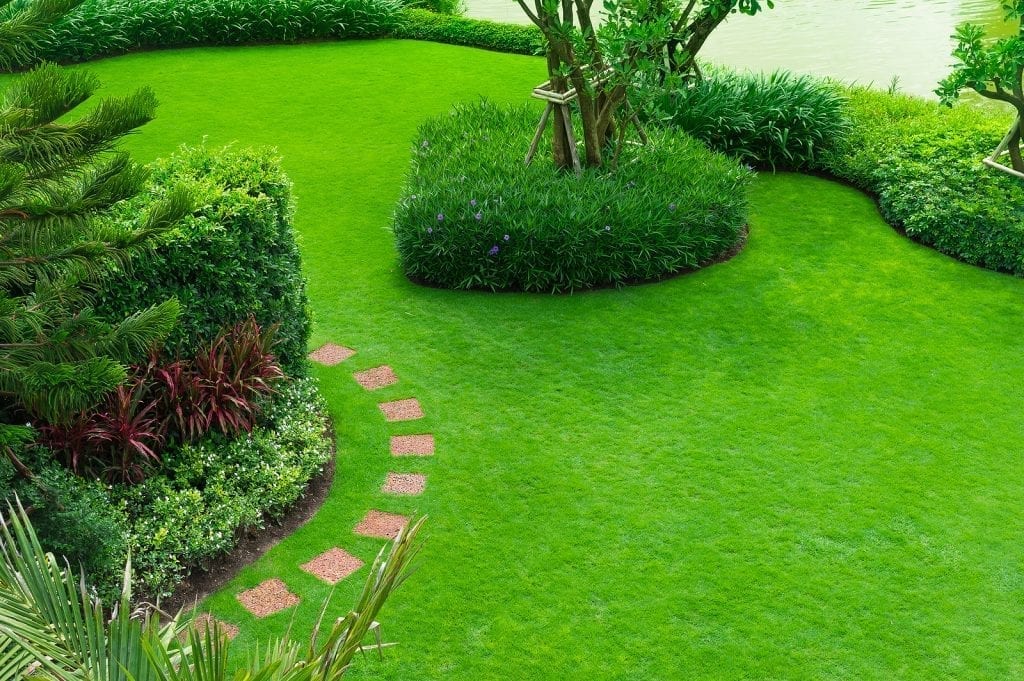Albuquerque Lawn and Landscaping Beautification Action Plan 2024

Spring has sprung in Albuquerque! Now’s the time to shake off winter and get your Albuquerque lawn and just as important, Albuquerque landscaping, ready for the warmer months. A beautiful landscape doesn’t happen overnight. It takes a bit of work and treatment.
Want your lawn and gardens to be the envy of the neighborhood this year? Then follow these pro tips to refresh your landscaping this spring.
Take a Good Long Look at Your Yard
Before doing anything else, take a slow, careful walk around your entire yard. Make notes of anything that needs sprucing up.
Look for:
- Branches on trees and shrubs that look dead or damaged. They’ll need pruning.
- Areas of grass that are thin or patchy. They may need re-seeding or replacement.
- Signs of problems on plants like weird spots, holes, or sticky residue. This could mean disease, bugs, or fungus.
- Little green weeds poking through in beds or your lawn. Nip them in the bud now before they spread.
Inspect every single part of your yard – lawn, planting beds, gardens, trees, etc. Jot down any issues so you can fix them up. A good look-see now means you’ll know exactly what needs doing to get your yard gorgeous.
Check What’s in Your Soil
The plants in your yard get their food from the soil. But over time, the soil might not have quite the right nutrients your plants need.
Before adding any fertilizer, it’s smart to have your soil tested. Your county extension office can help with this. Or you can use a home test kit.
Testing tells you important stuff like the pH level and amounts of nitrogen, phosphorus, potassium and other nutrients. This info helps you pick the best fertilizer for your soil’s needs. Test every few years to see how your soil changes.
Fertilize the Lawn at the Right Time
Should you feed your lawn this spring? That depends on what the soil test says. Fertilizer gives grass the nitrogen and other goodies it needs to be thick and green. But if your soil already has enough nutrients, fertilizing could hurt more than help.
If the test shows your lawn needs fertilizer, be sure to:
- Pick one made for your grass type. Food for cool-season grass like bluegrass isn’t the same as for warm-season grass like Bermuda.
- Apply at the best time of year for your variety. Many people think spring is always best. But some cool-season grass does better with fall fertilizing. Some like it in early to mid summer.
- Use slow-release fertilizer to avoid waste and help your lawn absorb nutrients. Organic fertilizers like compost work too.
- Follow the package directions exactly! Too much fertilizer can burn the grass. Too little won’t give you the lush lawn you want.
Check with your city about rules on what kind of fertilizer you can use, when you can apply it, and how much. Landscape pros know all the guidelines to feed your lawn the right way.
Don’t Forget Your Trees, Shrubs, and Plants!
Your trees, shrubs, and other landscape plants need nutrients too for fabulous flowers and healthy growth. Apply slow-release fertilizer before adding fresh mulch for great results all season.
Ask at your garden center for tips on the best kinds of fertilizer and how to use it on specific plants. It’s easy to overdo it with fertilizer, so follow recommendations. Too much can hurt your plants!
Stop Weeds Before They Get Started
Now is the time to get ahead of warm-season weeds like crabgrass before they cause headaches. Crabgrass preventer works great, applied when forsythia is fully blooming. That’s usually right around the time crabgrass starts sprouting from seed.
Pre-emergent weedkiller makes a barrier to stop seeds from sprouting but won’t hurt existing plants. Put it down before seeds start growing for best control. Read the label and use as directed for success.
Make Your Planting Beds Look Sharp
After a long cold winter, the edges around planting beds can start looking shaggy. Make them look neat and crisp again by going over the edges with edging shears. While you’re at it, clear away fallen leaves and other winter debris.
Next, add a fresh layer of mulch to beds and around trees. Spread it about an inch deep, keeping it a couple inches away from trunks and stems. Mulch holds in moisture, cools roots, and improves the soil. A light coating gives your yard a put-together look.
Check Your Sprinkler System
Make sure your sprinklers are ready for summer watering! Turn the system on and watch it run through a cycle. Look for leaks, clogged sprinkler heads, or other problems. Fix any issues now so your system runs smoothly all season.
If you’re not sure how to maintain your irrigation system, ask a pro for help. They can get it working perfectly with any necessary repairs or maintenance.
Some Projects Call for the Experts
Some yard projects are best left to qualified pros, like major tree pruning, lawn renovation, or sprinkler installation. Landscape contractors have the skills, equipment and manpower to complete big jobs efficiently.
Hardscape projects like patios, retaining walls and walkways often require specific tools and knowledge, too. Don’t be shy about calling in the experts when a project is beyond your DIY comfort zone.
Final Thoughts
Follow these tips to get your yard looking fantastic this spring. But don’t stop there! Proper maintenance is a year-round job. Keep up with lawn care, pruning, weeding and other tasks through summer, fall and winter. Your landscape will look healthy and gorgeous every season.
If staying on top of yard work feels overwhelming, consider getting help from a professional landscaping company.
